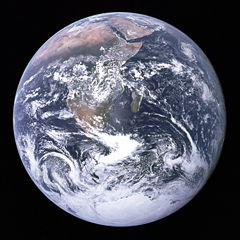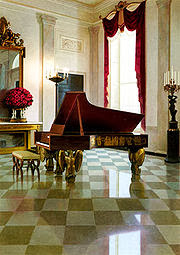In review---Enchanted Ravel
Gerald Finley and Julius Drake
Songs by Ravel
Hyperion/Harmonia Mundi
French Impressionist composer Maurice Ravel specialized in short, ensemble compositions. Although his songs are less frequently recorded or written about, Ravel mastered both art and folk songs. The art songs would have reflected the era and country in which he resided. The French were not at that time short on poets or interdisplinary arts. So Ravel would have had his share of poetic muses in which to create musical canvasses. His love of folk songs, especially Spanish folk songs, came from his Basque mother who instilled a love of Spain and its folk traditions.
According to the liner notes for operatic baritone Gerald Finley and pianist Julius Drake’s interpretation of Ravel’s short form, Ravel’s Songs, these gems are not appreciated to the extent that they deserve.
“Why this is so remains something of a mystery, but it could stem from his refusal to repeat himself, so there is nothing we can call a typical Ravel song. Of course this refusal applies to every aspect of his work, but is there perhaps something in the psyche of music lovers that prefers songs to be ever so slightly predictable?”
While Ravel’s Bolero (also inspired by Spain), possesses a predictable pattern within itself, the piece resembles no other Ravel composition. However, Ravel did repeat himself by borrowing musical passages from Rapsodies espagnole for his ballet Daphnis et Chloe. But overall, Ravel did embark into new territory when he composed new material.
Ravel though was a contradictory and an enigma anyone, scholar or music lover have yet to figure out. Even his biographers disagree on Ravel’s personal life and musical endeavors. This is what makes Ravel’s repertoire fascinating. Here we have a brilliant musical mind, sensitive to the many nuances of harmony, tone, melody, rhythm (often mechanical-like), and orchestration. Here was a personality that ran the gamut from rebellious youth, even arrested development to an enchanted man, who obviously loved the natural world, which we glean from listening to his art and folk songs.
Finley and Drake bring their own sensitivities to this recording, both in their delicate interpretation and performances of the 26 songs included on this disc. Finley is mostly known for his performances of Mozart and Handel’s operas and I have heard some excerpts o f him singing Mozart’s operas. Ravel was a huge fan of Mozart and would borrow ideas from Mozart’s scores. Drake has recorded the work of Romantic composers, which is a genre that Ravel claimed to rebel against. Yet, Drake handles this lighter piano work with aplomb (lighter than Romantic piano sonatas and concertos).
Finley and Drake also seem to draw inspiration from each other as they sail through these sets of songs. The sets include, Histoires naturelles, Don Quichotte à Dulcineè, Chants populaires, Deux èpigrammes de Clèment Marot, Cinq melodies populaires grecques, Deux melodies hèbraiques and some single songs.
I especially enjoyed Histoires naturelles, Don Quichotte à Dulcineè, Cinq melodies populaires grecques and the haunting Deux melodies hèbraiques. The songs provide an array of emotions for the musicians to explore and this duo relishes every moment.
Most of the songs feature lyricism and beautiful melodies, but a couple of the songs feature dissonance, though not of the Schoenberg variety. I find the recording relaxing and enchanting. And I believe that fans of Ravel’s work will feel equally enchanted.
Distributed in North American by Harmonia Mundi
Songs by Ravel
Hyperion/Harmonia Mundi
French Impressionist composer Maurice Ravel specialized in short, ensemble compositions. Although his songs are less frequently recorded or written about, Ravel mastered both art and folk songs. The art songs would have reflected the era and country in which he resided. The French were not at that time short on poets or interdisplinary arts. So Ravel would have had his share of poetic muses in which to create musical canvasses. His love of folk songs, especially Spanish folk songs, came from his Basque mother who instilled a love of Spain and its folk traditions.
According to the liner notes for operatic baritone Gerald Finley and pianist Julius Drake’s interpretation of Ravel’s short form, Ravel’s Songs, these gems are not appreciated to the extent that they deserve.
“Why this is so remains something of a mystery, but it could stem from his refusal to repeat himself, so there is nothing we can call a typical Ravel song. Of course this refusal applies to every aspect of his work, but is there perhaps something in the psyche of music lovers that prefers songs to be ever so slightly predictable?”
While Ravel’s Bolero (also inspired by Spain), possesses a predictable pattern within itself, the piece resembles no other Ravel composition. However, Ravel did repeat himself by borrowing musical passages from Rapsodies espagnole for his ballet Daphnis et Chloe. But overall, Ravel did embark into new territory when he composed new material.
Ravel though was a contradictory and an enigma anyone, scholar or music lover have yet to figure out. Even his biographers disagree on Ravel’s personal life and musical endeavors. This is what makes Ravel’s repertoire fascinating. Here we have a brilliant musical mind, sensitive to the many nuances of harmony, tone, melody, rhythm (often mechanical-like), and orchestration. Here was a personality that ran the gamut from rebellious youth, even arrested development to an enchanted man, who obviously loved the natural world, which we glean from listening to his art and folk songs.
Finley and Drake bring their own sensitivities to this recording, both in their delicate interpretation and performances of the 26 songs included on this disc. Finley is mostly known for his performances of Mozart and Handel’s operas and I have heard some excerpts o f him singing Mozart’s operas. Ravel was a huge fan of Mozart and would borrow ideas from Mozart’s scores. Drake has recorded the work of Romantic composers, which is a genre that Ravel claimed to rebel against. Yet, Drake handles this lighter piano work with aplomb (lighter than Romantic piano sonatas and concertos).
Finley and Drake also seem to draw inspiration from each other as they sail through these sets of songs. The sets include, Histoires naturelles, Don Quichotte à Dulcineè, Chants populaires, Deux èpigrammes de Clèment Marot, Cinq melodies populaires grecques, Deux melodies hèbraiques and some single songs.
I especially enjoyed Histoires naturelles, Don Quichotte à Dulcineè, Cinq melodies populaires grecques and the haunting Deux melodies hèbraiques. The songs provide an array of emotions for the musicians to explore and this duo relishes every moment.
Most of the songs feature lyricism and beautiful melodies, but a couple of the songs feature dissonance, though not of the Schoenberg variety. I find the recording relaxing and enchanting. And I believe that fans of Ravel’s work will feel equally enchanted.
Distributed in North American by Harmonia Mundi




Comments
Post a Comment